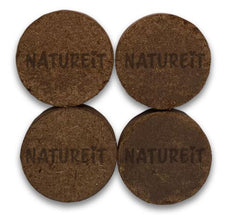The art of Bonsai is a wonderful thing. Growing a Bonsai tree is a great adventure and a journey many people are starting to take. You can find people growing these miniature trees for a hobby, as part of therapy, for decorating their homes and gifting people they love.

It is important to remember that a Bonsai tree is not a simple herb or houseplant and it requires much caring and maintenance.
Growing a healthy, flourishing Bonsai tree will require you to watch and care for it, knowing when it needs more (or less) sunlight, water, heat, fresh soil and nutrients, and never neglecting it.
Soil

Using the right soil is crucial when growing a Bonsai tree. You can’t just pick any dirt from the yard and use it as your new seed’s growing house. The soil needs to be able to drain water efficiently while still absorbing it and keeping the moisture. When the water builds up and the soil is drenched, it retains salts and prevents the air from reaching the roots which will eventually result in bacteria, mold and kill the roots of the plant.
When watering your plant you should be able to see the water draining out of the bottom almost immediately.
It is recommended to plant Bonsai trees in in organic materials such as pumice, lava rock, akadama (a clay based soil from Japan), and organic potting soils.
The ration of soil you need to use is determined by the species of your tree (Deciduous or Coniferous).
Water

One of the common reasons for seeds not being able to germinate is the amount of water you use to water your plant. It’s vital that you do not overwater your plants because Bonsais especially are not the kind of plant that can endure excess water. The tree roots will easily rot away when drenched with water for a certain period of time, especially when they are young and weak.
A rule of thumb is to always see that the top of the soil is moist. 1-2 inch of the soil is enough and don’t let it be too wet. If the soil is good, it will allow the water to drain slowly into the bottom and water the roots as much as they need. Use your finger to check the top of the soil and if it’s dry – water it.
As your tree grows, if you start noticing that the water drains out quickly and the soil is almost always dry – it most likely means that your roots have become too big and it’s time to repot your tree.
Fertilize

Adding fertilizers to your plants can be tricky. It can be a great help to your plants when growing and needing some extra strength as well as after stressful processes such as transplanting or repotting. But, when using the wrong fertilizer or in the wrong dosage or way, it can also be a disaster to your plant.
When choosing your fertilizer look for the “NPK Value” on the bag – which shows how much of each nutrients are in it. What you are looking for is for an even mixture of the 3 nutrients in the fertilizer - nitrogen, phosphorous, and potassium.
When there are multiple leaves growing on your plant you can start adding the fertilizer to the top of the soil. When you water your plant the nutrients will absorb in the water and flow through the soil. DO NOT use fertilizer more than advised on the fertilizer’s bag – usually once a month should do the work.
Leaves

One of the best indicators to your plant’s health is its leaves. Their color, their shape and the direction they are tilted to. You should oversee the appearance of your tree’s leaves and watch for any signs of discoloration, weakening or holes you should take action. Brownish or Yellowish leaves may indicate you are overwatering your plant. It may also mean your plants are not receiving enough magnesium, zinc or nitrogen from the soil. Using a PH strip to determine the acidity level in your bonsai plant is the most efficient way to check if your plant is healthy.
Happy growing!





